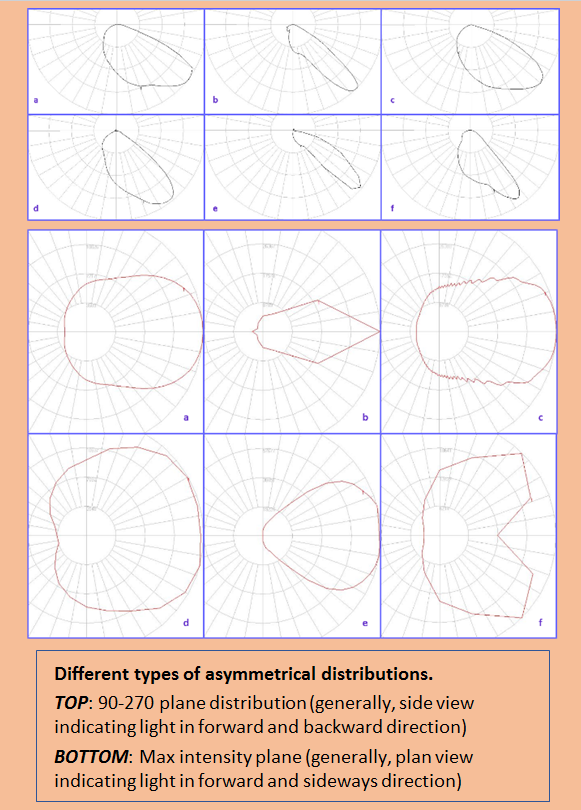Floodlighting has evolved considerably with rapid advancement in the range of optics available for LEDs. Different optical systems available now help intricately shape the light distribution to direct light in the right directions.
General purpose LED floodlights are readily available and well known. They often have a wide beam (often in the range of 100 – 120 deg) light distribution and have been widely used in numerous outdoor lighting applications. However, LED floodlighting has slowly seen emergence of asymmetrical distribution floodlights, catering to general area, carpark, and sports lighting. Some common terms used for them are asymmetrical, double asymmetrical, forward throw, directional forward etc. In general terms, an asymmetrical floodlight, when un-tilted (front cover or light emitting surface parallel to the ground) predominantly emit light in forward direction rather than equally in all directions as a wide beam light distribution does.
Asymmetrical floodlights present numerous advantages over general wide beam floodlights:
– Effective use of the light output. With tilted general floodlights, considerable amount of light may be lost, directed towards the sky
– Reduced spill light into neighboring residential properties, aiding compliance to AS4282
– Often no tilt or very minimal tilting is required, compared to general floodlights which may require high tilt angles. This may result in viewing discomfort and glare due to full, direct view of light emitting surface.

Emergence and gradually increasing preference of asymmetrical floodlights over widespread widebeam floodlights is indeed a positive development. However, there are several caveats. Asymmetrical floodlights have varying peak intensity angles. This is the angle at which the peak intensity of the asymmetric beam is aimed. Peak intensity angles may vary from 30deg to 60deg. This, in very general terms, decides the distance forward that the light can cover.
Asymmetric floodlights also differ in the narrowness or wideness of the asymmetric beam. Both these factors greatly affect the uniformity, light levels, area that can be illuminated, effectiveness in achieving Australian Standards for lighting, back spill control and optimum mounting heights.
These factors also govern the effectiveness of a particular asymmetrical floodlight for use in different applications such as large sports fields, smaller sports areas, industrial hardstands, and carparks. Some asymmetrical beam distributions may be more suited to particular application than others.
If you need to know more regarding different aspect asymmetrical floodlights or have any queries regarding their technical aspects, use in a particular application or lighting simulations using them feel free to contact us at any time. DNS Lighting offers numerous asymmetrical floodlights with several types of asymmetrical distributions which can cater to a wide range of applications.

